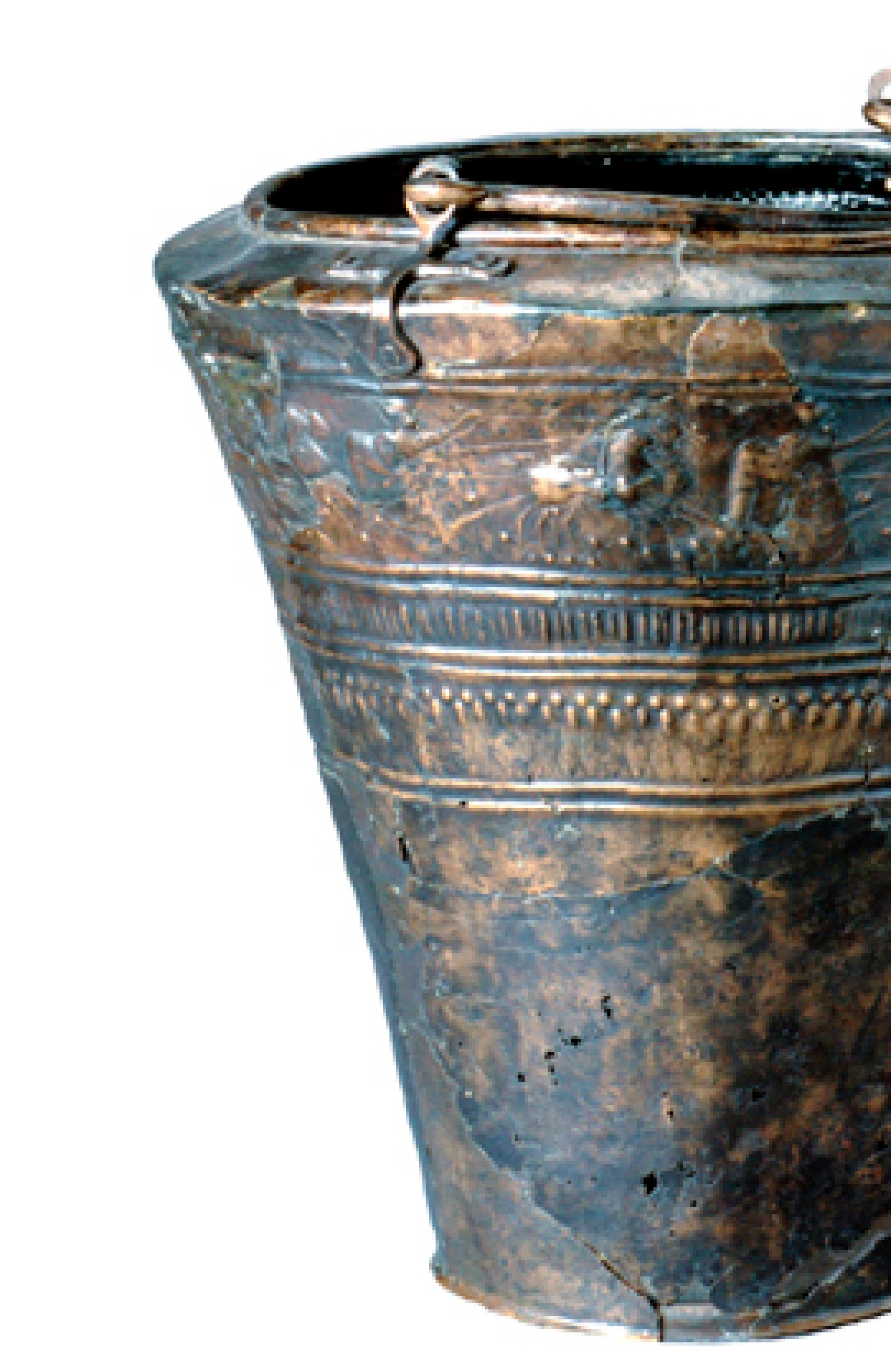Contact: Dr. Veronika Holzer
The objects in the Late Iron Age collection at the Natural History Museum are mostly from the former territories of the Austrian-Hungarian
Empire.
One of the most beautiful and oldest pieces is the Situla of Kuffern. This small pot made of bronze sheet metal is the only
vessel of its kind found north of the Alps to be decorated with a human figure. An engraved band around the vessel shows scenes
from the life of a Celtic man. The three images show a man surrounded by his servants, a boxing match and a horse race. The
second half of the frieze shows a chariot race. Also belonging to the early period of the Latène culture are burial site finds
from Vienna XXI (Leopoldau) and numerous fibulae from the bronze cauldron depot in Duchcov (Czech Republic). In addition to
bronze arm rings and bronze rings, hundreds of bronze fibulae were also found in this cauldron. These fibulae are characterised
by a bent back foot with spherical or similarly shaped foot decoration and spirals on both sides wrapped around the fibulae
2-3 times.
The most important objects of the Middle Latène come from the central Celtic settlement of Roseldorf/Sandberg, where the Department
of Prehistory has been carrying out research since 1995. Back then it was the discovery of one of the collection’s most impressive
items – a fine Celtic belt hook made of iron with antithetical dragon figures arranged in a lyre ornament, dating from the
second half of the 5th century BC – that gave rise to further investigations at the site. More recent studies have added mainly
ritual offerings such as weapons, including intricately decorated sword scabbards, lance tips, shield bosses, chain mail,
parts of chariots and horse bridles.
Items dating from the end of the Latène period include finds from the rich necropolises of Mihovo (Slovenia) with around 400
cremation and inhumation graves. People were buried here as early as the Hallstatt period. The site was in continual use from
the later part of the Early Latène period through until the early part of the Roman Imperial period, though the number of
new graves added fluctuated. One of the most beautiful finds from Mihovo is an iron longsword with a decorated sheath dating
from the Late Latène. The ornamental sheath is made of thin sheet bronze and depicts a pair of antithetic hoofed animals.
Above them is a cow with a bird on its back. The same period also gave rise to the rich finds of the Oppidum Stradonice on
the Hradiště hill (Czech Republic), which also form part of this collection.








